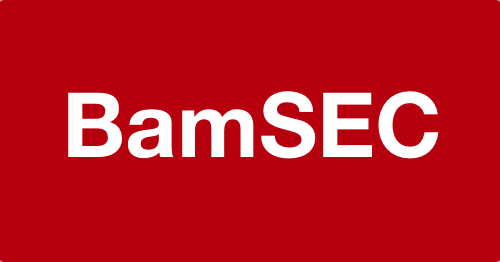What's 🔥 in Enterprise IT/VC #225
👨🏼💻👩🏼💻👩🏾💻 Twilio with 10 million developer accounts 🤯 and still early innings, meet Sparky the Boldicorn 🐲🦄
Developers are on 🔥 - Twilio announced blowout numbers this past week, more here in their earnings transcript.
We delivered nearly $1.8 billion in total revenue, up 55% over last year, incredible growth at this scale. We acquired Segment, combining a market-leading customer data platform with our leading communications platform.
We ended the year with more than 221,000 active customers and more than 10 million developer accounts. And we hosted our first-ever virtual SIGNAL with more than 32,000 registrations. Our 2020 results reinforce the idea that there is a massive generational opportunity in front of us. We have long known that there is a huge shift to more digital experiences and that every company is becoming a software company, and that has been fueling our growth for more than a decade.
And what 2020 showed us is just how true it is that companies that embrace building, that embrace software agility, that empower their developers are the companies that are prepared to the unknown. Whether it's a pandemic, more competition in the market, or anything else that is threatening to disrupt an industry or a business, the companies that embrace software are able to accelerate their ability to respond to the changing conditions in their market. The pandemic accelerated change overnight. Health care had to accelerate the adoption of telemedicine, and commerce companies accelerated their e-commerce plans.
Companies that hired more developers and upped their digital game during the pandemic are not going back. The pandemic was a booster, and now they are even better at addressing the digital needs of their customers. Digital is here to stay, and there are more and more digital businesses in the world that Twilio is powering. That's why we are so excited about the opportunity ahead.
I feel the same and truly believe that we are still in the early innings for the developer first movement. Thankfully, we’ve been focused on this movement for the last 11 years at boldstart, and I’m thrilled to announce two new funds to continue backing these founders on Day 1. We tried something different this time with a launch video featuring our developer mascot, Sparky the Boldicorn, with music from my son 😄 (Lucas aka Lexim) - click through and enjoy.
Thanks to Connie Loizos from TechCrunch for covering us along with interviewing me on the 🎧 Strictly VC/TechCrunch podcast diving deeper into how we fund pre-product founders, developer first companies like Env0 and SpectroCloud, and why founders need to have the ability to zoom in on the user to build product but zoom out to know what the market could like in the future.
As always, 🙏🏼 for reading and please share with your colleagues and friends.
Scaling Startups
💯 builders build 👷♀️🏗️
Why did I leave Google or, why did I stay so long? - Noam from Waze shares why he sold and why his dream turned into a nightmare. Hunter Walk also succinctly shares why you can never be truly independent as part of a large corporation. So many 💎 in here but one that stood out for me, especially in the era of preemptive rounds, is the importance of choosing your investors wisely and not speed date as it’s a long term relationship
“wouldn't you rather work for Larry Page than our current board”? We were committed to our mission and saw this as a change in the cap table rather than a change of mission. This counted on the fact that Google had promised us autonomy to continue to act as Waze and we believed them.
Shreyas from Stripe nails it again - read 🧵
The Shocking Meltdown of Ample Hills (Marker): It’s an🍦startup but still, a tale of what can happen when you put growth ahead of all else…
Interviews with Smith and Cuscuna, along with more than a dozen employees, from scoopers to executives, reveal the perils of what can happen when a hot startup puts growth ahead of business fundamentals. As Smith tells Marker, having Disney behind them fueled much of the co-founders’ overconfidence, encouraging them to think they could become the next Ben & Jerry’s. Disney’s interest also helped the company attract investors, he says, which created “a runaway train of raising and raising and growth and growth.”
By chasing rapid expansion without paying enough attention to how much they were actually spending, the co-founders ended up making big bets that cost the company millions — and mistakes that left thousands of gallons of ice cream literally swirling down the drain. “It was a fairy tale,” says Greg O’Connell, one of Ample Hills’ biggest investors. “They were kind of living in a dream world because their marketing was so great.”
Dan Rose from Coatue shares his experiences working for Bezos and Zuck🧵 - this one stands out the most, as I’ve written before the ability for founders to zoom in to the details on the product and user and zoom out to see the market is rarely found in one person and when it is, magic happens (more from a prior What’s 🔥)
Switching gears, a common thread for me this week was spending time with founders on product launches, next round decks, fundraising, etc., and what I noticed is how hard it is for many of us, especially technical founders, to context switch between the 🔬 microscopic and the 🔭astronomic. Both are needed when it comes to building a great company.
Enterprise Tech
😲 so many companies in the ML Ops space, best of breed in every category - which VC are you - 🥛half empty or 🥛half full - too many companies or the land of opportunity?
What’s 🔥 in the analytics stack from Justin Gage and yes there’s a difference between data analysts and data scientists…
Chaos Engineering is a culture, philosophy and not just tools (from Chaos Carnival)
Julie Gunderson, a DevOps advocate at PagerDuty, kicked off her talk by warning that chaos engineering is not chaotic, but more trying to prepare for chaotic times.
“Chaos engineering isn’t about breaking things. It’s not about trying to figure out how we can make things fail. Or engineering being chaotic. Or processes unpredictable,” she said.
“Chaos engineering is about building a culture of resilience in the presence of unexpected system outcomes,” wrote Nora Jones, CEO and founder of the incident analysis software provider Jeli (a portfolio co) as well as co-author of the O’Reilly book on the subject.
What’s 🔥 in European developer first ecosystem - 🧵 for up and comers…
Another application monitoring company is now a 🦄 as Sentry raises $60 million with a focus on code observability and developers vs. dev ops - yes, shift ⬅️ continues…
Since we introduced Performance Monitoring to our Application Monitoring suite last July, we’ve resoundingly heard developers validate the exact gap we sought out to address: an ever-increasing need for code observability. Given the exponential pace at which code is changing now, observability of systems is simply incomplete without code observability. From frontend to backend, developers now need a broader view of their application health to deliver a seamless product experience. This means that the number of vectors across their code that a product owner cares about has also multiplied: errors, performance, releases, sessions, APIs, customer segments, customer elements and more. In the coming years, I foresee our solutions to these challenges becoming no-brainers in the developer workflow and experience.
What’s IaC (infrastructure as Code) and what’s next? Shift ⬅️ from dev ops to devs and much more - great post from @DevOpsOhad @envZero (a portfolio co)
All of those predictions mean one thing — Moving to Code and Shifting Left: code instead of GUI, several layers of code (IaC vs Configuration Management), etc. However, shifting left means providing more power and control to developers, so in my view, the future is all about managing code in order to improve developer’s efficiency, while creating policies and guardrails for the organization.
Terraform fanatic Anton Babenko has a lot to say about Infrastructure as Code, but it all boils down to users wanting simplicity, velocity, and maintainability. When it comes to the future of IaC frameworks, he says, “The one who avoids accidental complexity will win.”
What to expect from DevOps in 2021, according to the analyst (cloudbees)
This year, analysts see DevOps organizations raising the bar on automation. “We really need to see an acceleration in unified automation strategies, which will come to the forefront in 2021, says Jen Thomson, senior research director at IDC. “We need to start to shrink the release and developer effort that’s involved.” This effort will parallel DevOps’ drive for better scalability. It’s crucial that teams “gain alignment on commonality of architecture and business roadmaps,” Thomson says. “This will allow us to have repeatable approaches to things like risk and security.”
This year ASG’s Ashley wants to encourage software teams to “strive to connect the dots” between the work they’re doing and how it's delivering business results. If software groups can’t make that connection, he says, “then the business won’t value us, it’ll be a cost.”
Calling all open source founders - answer Julia’s call to action
This is so cool and gives me chills watching it
Markets
Oracle Is Turning Into a Cloud Giant. Why Its Stock Is a Buy. (Barron’s)
There are three major elements of Oracle’s shift to the cloud. One is database software, where its main innovation is Autonomous Database, or ADB, a cloud-only product that uses machine learning and artificial intelligence to automate security, backups, patching, and other tasks that used to require an army of administrators. As it shifts business to the cloud, Oracle smooths out revenues, while picking up extra cash for server licenses and other ancillary services. Over time, a switch to the cloud will help grow revenue, which was up a modest 3% in the latest quarter, to $4.2 billion.
😲 Shopify
😲😲 Twilio 🧵
While not enterprise, this is stunning - Coinbase valued at over $100 billion
















